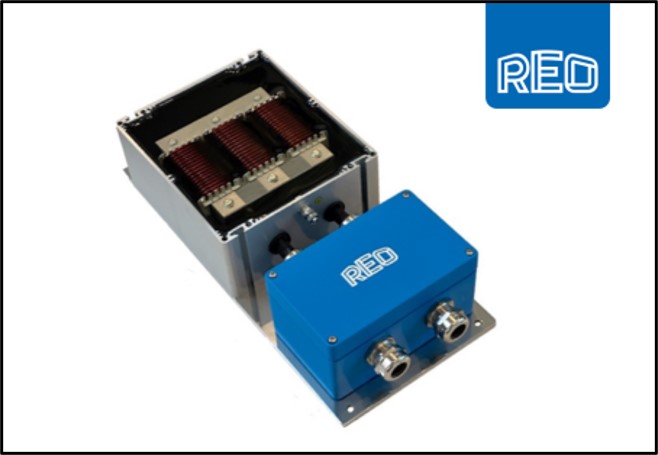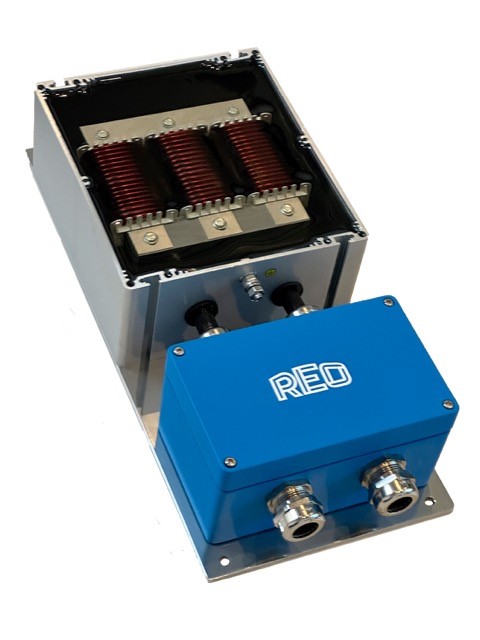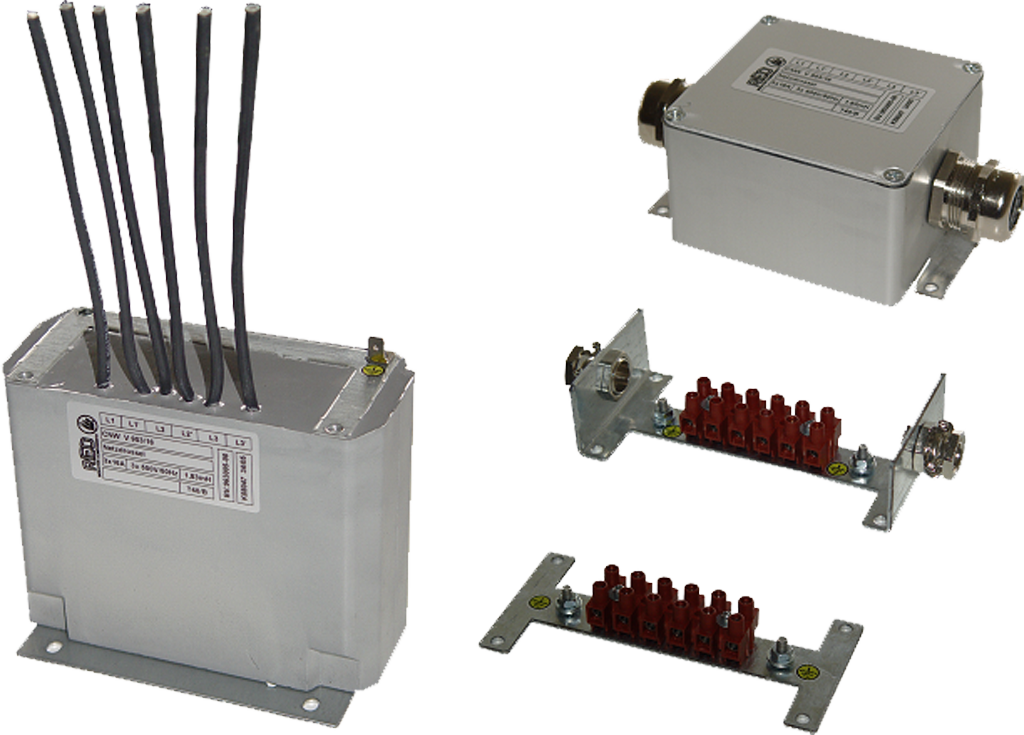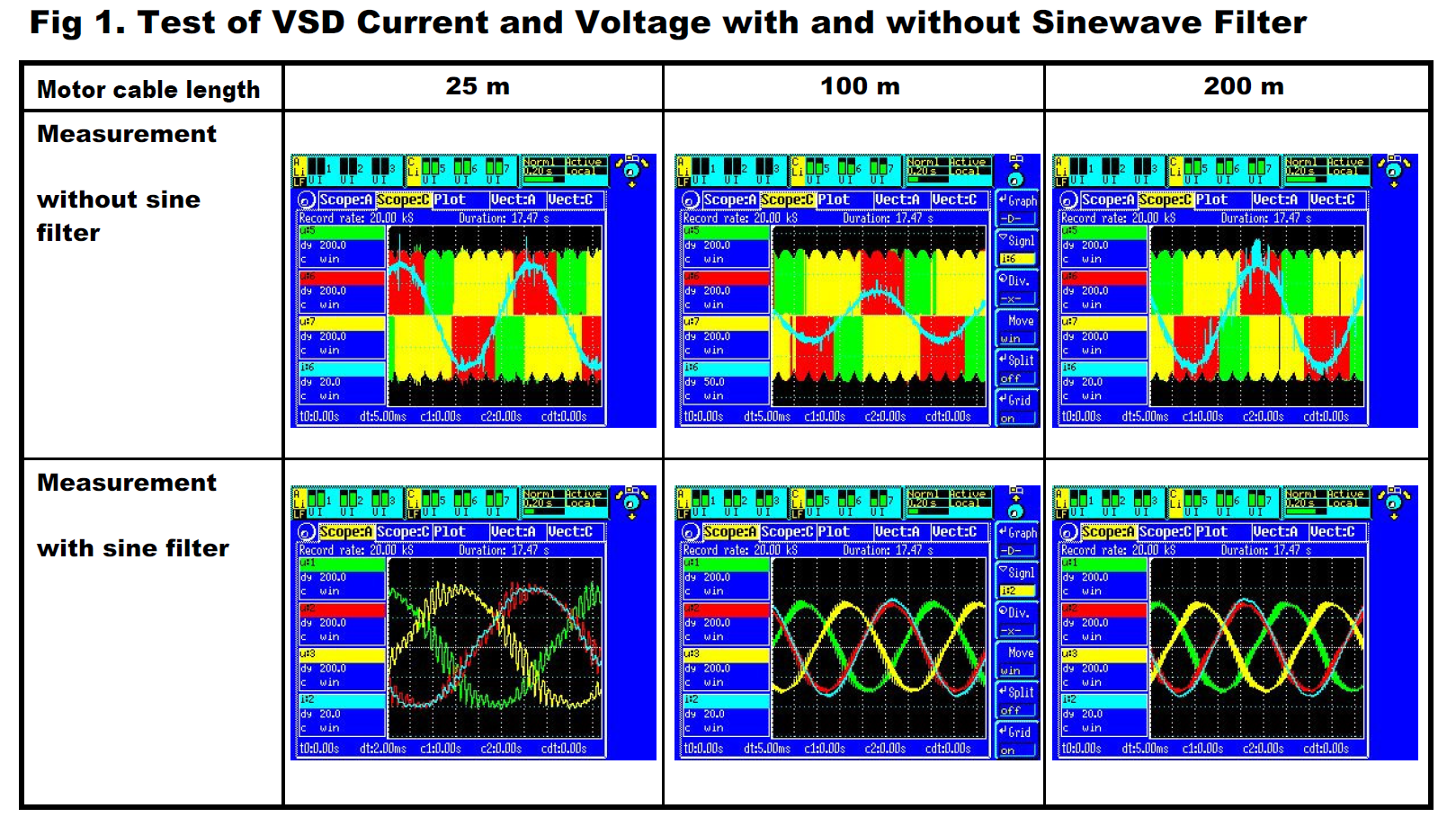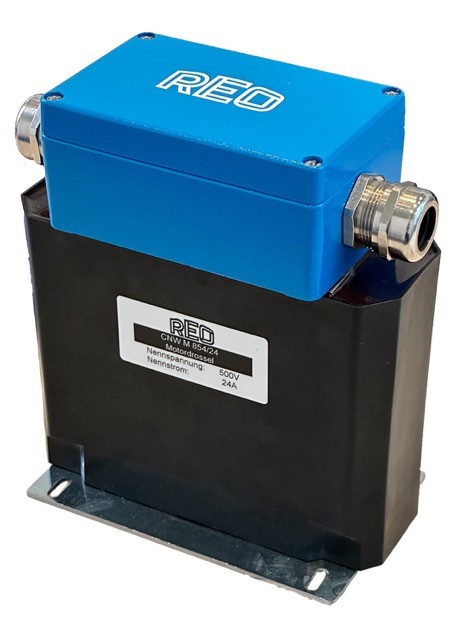The Role of Harmonic Reduction Chokes, Motor Chokes, and Sinewave Filters in HVAC Applications
Downloads
| REO2025-9-Chokes-in-HVAC-Applications.docx ( DOCX 241KB) |
| Primary_REO-HVAC-Harmonic-Choke.jpg ( JPG 44KB) |
| Secondary_CNWm903.png ( PNG 675KB) |
| Secondary_Drive-output-voltage-test-results.png ( PNG 1761KB) |
| Secondary_-EO_HVAC-IP65-Motor-Choke.jpg ( JPG 45KB) |
HVAC (Heating, Ventilation, and Air Conditioning) systems are essential for maintaining indoor air quality and comfort in residential, commercial, and industrial environments. According to grandviewresearch.com, the UK HVAC market has grown significantly; in 2024, it generated approximately USD 6.68 billion and is projected to reach USD 10.28 billion by 2030, driven by increased urbanisation, climate change, construction growth, and a focus on energy efficiency.
Modern HVAC systems often use Variable Speed Drives (VSDs) to drive and control fans and pumps. However, VSDs introduce electrical harmonics, voltage spikes, and electromagnetic interference (EMI), which can reduce reliability and increase running and maintenance costs. Integrating external harmonic reduction chokes, motor chokes, and sinewave filters can help reduce the effects of these problems and help comply with EN 61800-3, the standard concerned with Electromagnetic Compatibility (EMC) for Power Drive Systems while improving energy efficiency and system longevity.
Harmonic Reduction Chokes for Energy Efficiency and EMC Compliance
Harmonic currents from VSDs cause excessive heating in transformers, motors, cabling, and switchgear and can interfere with electrical equipment in the same installation. Harmonic reduction reactors, or line chokes, mitigate these issues by smoothing the input current, reducing total harmonic distortion (THD) and with standards conformity.
Motor and Sinewave Filters for System Reliability
The high-frequency switching circuitry within a VSD can lead to motor insulation failure and accelerated wear, resulting in costly downtime. To solve this issue, motor chokes are placed between the VSD and motor, and sinewave filters provide superior protection by converting the pulse-width modulated (PWM) output of a VSD into a near-sinusoidal waveform. This reduces electrical stress on motors and minimises EMI emissions, making them ideal for long cable runs.
Key advantages of motor chokes and sinewave filters include:
- Extended motor lifespan, reducing voltage peaks that degrade the insulation.
- Lower bearing currents help prevent premature motor failures.
- Improved EMC compliance as a result of lower EMI emissions.
- Enhanced motor efficiency, lowering power losses and heat.
- Lower acoustic noise, essential for hospitals, offices, and residential spaces.
Challenges with IP65/66 Drives and Choke Solutions
The increasing use of higher-ingress-protected IP65/66-rated drives in HVAC introduces challenges in finding suitable choke solutions. These drives, built for potentially dusty and moisture-laden environments, often lack space for additional chokes, requiring additional enclosures with appropriate thermal management and cost.
HVAC installers must select compact, high-IP-rated chokes designed for these environments that can be directly connected to the VSD to maintain compliance with EMC standards while ensuring reliable system performance.
Longer Cable Runs and Compliance Issues
Most VSD manufacturers only design drives for use with short runs of motor cable, often less than 5 meters. In contrast, HVAC systems often require much longer cable runs to connect VSDs to motors across extensive distances in larger buildings. Longer cable runs increase the likelihood of dV/dt stress and increased EMI, making compliance with EN 61800-3 more challenging.
To mitigate these issues:
- Sinewave filters should be utilised to smooth the voltage waveform and reduce stress on motor windings. These filters often negate the need for shielded cables, reducing installation costs.
- Proper grounding techniques must be implemented to ensure a low-impedance earth.
- Chokes or line reactors can minimise transient voltage spikes along longer cable lengths.
Other Operational Issues and Choke Solutions
Additional operational issues HVAC installers face include:
- Energy inefficiency from voltage harmonics can be mitigated using line reactors to reduce input rms current.
- EMI affects sensitive equipment and is minimised with chokes and sinewave filters.
- Voltage reflections in long cable runs are reduced using sinewave filters, which smooth voltage waveforms and attenuate high-frequency noise.
- Audible motor noise, sinewave filters convert the VSDs PWM output into a smooth sinusoidal waveform, improving workplace comfort and minimising noise pollution.
Some choke and filter manufacturers provide testing and data for various VSDs and cable lengths to ensure compliance with EN 61800-3, allowing HVAC installers to select the most effective solutions for their applications.
Conclusion
In HVAC applications, the use of input chokes, motor chokes, and sinewave filters are important for energy savings, equipment longevity, and regulatory compliance. These components enhance system reliability by mitigating harmonic currents, voltage spikes, and EMI. VSDs in HVAC systems, particularly IP65/66 versions using Longer Cable Runs, pose integration challenges, requiring compact, application-specific components, and choke and filter manufacturers should be challenged to provide appropriate solutions.
To find more about our range of chokes and filters, please visit https://www.reo.co.uk/types/chokes/










